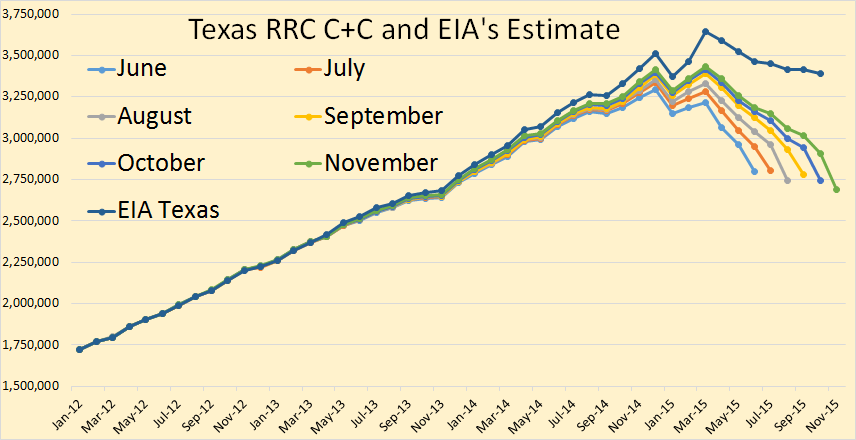There is concern that World C+C may decline steeply after the peak, I believe those concerns are over blown. There is always the possibility that there could be a severe recession due to high debt levels, high oil prices or potentially due to both problems in combination. War and environmental damage due to overpopulation are also potential problems which may lead to a crisis.
If none of these problems arises in the near term (say for the next ten years), and demand for oil is high enough to keep annual average oil prices above $75/b from 2018 to 2025, then the average annual decline rate of oil (C+C) output will remain under 2%.
For simplicity in the analysis that follows, I assume the peak in C+C output is 2015 and that output will decline at a relatively steady rate from 2015 to 2025. This in unlikely to be the case in practice and the actual path of future world output is unknown, the intention is to determine a likely trend line for World C+C output. Using quarterly C+C output data from the EIA, I constructed the charts that follow.
Data is from the International Energy Statistics page at the EIA website.
The “Big 14” oil producers from 2002 to 2015 are (in order from largest to smallest): Russia, Saudi Arabia, United States, China, Iran, Mexico, Canada, UAE, Venezuela, Kuwait, Iraq, Nigeria, Norway, and Brazil. The Rest of the World (ROW) is all other oil producers besides the “Big 14”.
All charts below (except the natural log charts) are in kb/d.



